This article was co-authored by Trudi Griffin, LPC, MS and by wikiHow staff writer, Christopher M. Osborne, PhD. Trudi Griffin is a Licensed Professional Counselor in Wisconsin specializing in Addictions and Mental Health. She provides therapy to people who struggle with addictions, mental health, and trauma in community health settings and private practice. She received her MS in Clinical Mental Health Counseling from Marquette University in 2011.
This article has been viewed 17,176 times.
We all experience anxiety sometimes, whether about a job, a relationship, social interactions, or any number of other possible causes. However, recurring or excessive anxiety can interfere with day-to-day functioning and affect your mental and physical health. Journaling can be an effective way to manage your anxiety and develop healthier responses to your anxiety triggers. While it is best to begin journaling with the guidance of a therapist, there are several exercises that you can use to reduce your anxiety when it strikes.
Steps
Identifying and Challenging Anxious Thoughts
-
1Identify your trigger. Physical sensations of anxiety such as sweating, a racing heart, and trembling are connected to your thoughts and these thoughts often start because of a trigger. Your triggers may be almost anything, such as a noise, a sensation, or a situation.
- To begin to identify your anxiety triggers, start paying attention to what happens before you start to feel anxious and write about these things in your journal.
- For example, you might have heard a loud noise and worry that you are being robbed, or you might get a headache and worry that you have a brain tumor. No matter what the cause, take a moment to write it down.
-
2Think about why you are anxious about this trigger. When you have identified the trigger of your anxiety, you can start to think about why this is a trigger for you. Some questions you might respond to in writing to understand your trigger include:
- Why are you worried about this trigger?
- What do you think is going to happen?
- How strong is your belief that this will happen on a scale of 0 to 100%? (100% being the strongest)
Advertisement -
3Examine your feelings. After you have considered the reasons behind what triggered your anxiety, you will need to think about how you feel. Pay attention to the physical and emotional symptoms of your anxiety and write down a brief description of each one.
- What emotions are you having along with your anxiety? Are you frightened, excited, sad, angry, etc.? How intense are these emotions on a scale from 0 to 100%?
- What physical sensations are you having? Are you sweating, trembling, flushed, dizzy, in pain, etc.?
-
4Ask yourself questions to challenge your thoughts. Now that you have developed a good understanding of your anxiety trigger and how it is making you feel, you will need to find a way to challenge the thoughts that are driving the anxiety. Some good questions to respond to in writing include:
- What actual evidence is there to support or refute the thoughts you are having? For example, if you are having anxiety because you have a headache and you think it might be a brain tumor, then you might only have the pain as evidence to support the thought. Evidence to refute the thought might be that you have no other symptoms and that the pain goes away after you take some ibuprofen.
- What would you do if the worst-case scenario came true? For example, if you did have a brain tumor, you might have to have surgery and/or chemotherapy along with other treatments. You might also feel quite sad and afraid.
- What else might explain the way you are feeling? For example, other explanations for your headache could be that you have been straining your eyes too much, that you are dehydrated, or that you are under a lot of stress.
- What can you do about the situation right now? For example, you might decide that you can drink a glass of water and take an over-the-counter pain reliever, such as aspirin, ibuprofen, or acetaminophen.
-
5Consider your ideal reaction. After you have gone through these questions to challenge your thoughts, try to identify the type of reaction that you would like to have to these triggers and thoughts in the future. What is the ideal reaction that you would like to have when you experience the same trigger again? Make sure that you write your ideal reaction in your journal.
- For example, the next time that you have a headache, you might like to calmly respond by drinking a glass of water and pain medicine. Then, if the headache does not go away, you might call your doctor for advice rather than trying to diagnose yourself.
-
6Reflect on how you feel. To close the exercise, take another look at your anxiety level. Consider the current strength of your physical sensations and emotions regarding your original anxious thought. Then, write about how your feelings have changed.
- For example, how sure are you now that your headache means that you have a brain tumor? How do you feel physically and emotionally? Have your physical sensations and emotions become less intense? How would you rate their intensity now?
Trying Different Journaling Techniques
-
1Start with a dedicated daily writing time. Journaling is easy to do, and need not take much time out of your day — even only fifteen minutes per day is often beneficial.[1] However, as with taking on any new activity, establishing and maintaining the habit of writing down your feelings can be a challenge.
- One recommendation is to start the process by dedicating 30 consecutive minutes each day to journaling, for at least three to four days. Ideally, choose the same time and place each day, and avoid distractions or stopping. Do your best to write continuously for the entire half hour — worry less about what you’re writing and more about establishing the habit of writing.[2]
- Once you get used to the process of emotional journaling, you may be able to remove the dedicated time or place, or reduce the amount of time per day. You may be more comfortable carrying your journal with you and writing whenever the urge strikes you. However, if a set journaling time works best for you, stick with it. The number one rule of anxiety management through journaling is to do what works for you.
-
2Describe a relaxing place. Writing about a relaxing place may also help to calm you down when you feel anxious. The place that you choose to describe can be real or imaginary. Just make sure that you describe it in as much detail as possible. Use lots of sensory details like sight, sound, smell, and touch to bring your imaginary place to life.
- For example, you might describe your grandmother’s kitchen with sensory details by mentioning the yellow and white speckled linoleum floors, the sound of her humming mingled with the sounds of cooking, a soft, the feel of a cool breeze blowing in from the small window by the sink, and the smell of roasting meat in the oven.
- Any time that you feel anxious, you can read the description or write more about your relaxing place.
-
3Practice filling in brief details of your experiences. If you feel uncertain about your ability to put your experiences, thoughts, and feelings into words, focus first on "filling in the blanks" of an established script. With some of the "heavy lifting" already done for you, you can focus on expressing the basic details of your particular experiences.[3]
- For instance, draw up (or find an example of) a text with blanks to fill in, which may remind you of doing "Mad Libs":
- _____ [when] was a time in my life that I remember feeling good. I would sum up the feeling in a few words as _____. I remember being _____ [where] and noticing _____ [a sensory recollection]. I also clearly recall _____ [people there, other details, etc.]. I was ____ [describe activity or life experience then] at that time, and I realize I'll never return precisely there again. But I can return to feeling that way.
- For instance, draw up (or find an example of) a text with blanks to fill in, which may remind you of doing "Mad Libs":
-
4Practice defining your feelings with simple analogies. Some people simply aren't comfortable (or don't think they are comfortable) communicating their feelings, even when they are the only audience. Practicing with an established "script" that guides you through the process of expressing and defining your feelings can help ease you into a greater comfort level with emotional journaling.[4]
- Consider using a set of simple analogies, for instance:
- If feelings were animals, this one would be a _____.
- If feelings were food, this one would be _____.
- If feelings were TV shows, this one would be _____.
- If feelings were crayons, this one would be the color _____.
- Consider using a set of simple analogies, for instance:
-
5Lay out columns for your entries. Especially if you are someone who is more comfortable with structured experiences, the notion of free-flow writing may be a challenge. If so, you can eschew a paragraph-style format for a column-entry style of journaling, in which you provide specific types of information in defined places.[5]
- For instance, create three columns in your journal: 1) Situation; 2) Thoughts; and 3) How anxious do I feel? Then fill in the relevant information about particular episodes during your day that created anxiety, perhaps with a date and time attached for reference.
- This method can be particularly useful for “on-the-spot” journaling, where you jot down your feelings immediately or soon after an experience occurs.
-
6Leave clues for later reference. Some people who resist the idea of emotional journaling will say things along the line of “But I don’t know what I am (or was) thinking” or “But I’m not thinking about anything when the anxiety comes on.” You don’t have to have all the answers to benefit from journaling, however. The process of journaling itself helps you to discover the answers you need.[6]
- If you’re not sure what triggered an anxiety episode, or don’t know how to describe your thought process or how you were feeling, just jot down some possibilities that you can use as clues later. When you come back to your journal a few hours later, you may be able to process the experience more clearly, and use these clues to construct a more complete entry.
- For instance, say that you experienced a big surge of anxiety before a project meeting at work, even though you were well-prepared. The meeting itself may not have been the cause, so jot down some other possibilities to consider in greater depth later. Did you have an awkward conversation with a romantic interest at lunch? Did you have a fight with a loved one that morning? Do you have your bowling league championship match coming up that evening?
-
7Seek professional guidance. Some people will take to journaling quite readily, while others may need some more time and direct guidance in order to establish a beneficial routine. Emotional journaling can be a component of regular sessions with a mental health provider or done on your own, but it never hurts to get some expert advice.[7]
- Writing about personal anxieties can dredge up a surge of emotions in some people, so it is advisable to inform a mental health professional — or at least a person close to you whose judgement and compassion you trust — before embarking on the process. A professional can help you determine which types of journaling may be most beneficial for your particular anxieties.[8]
Gaining Benefits from Journaling
-
1Take the long view of the process. Keep in mind that journaling is not a “quick-fix” for anxiety. It is intended to be a way to help you recognize and learn to manage the feelings and factors that create your anxiety, which is not a process that is easily rushed. Just because you don’t feel immediately more relaxed the first time you try emotional journaling does not mean it can’t work for you.[9]
- Journaling may provide long-term benefits to emotional, mental, and even physical health, but in the short-term, it can have either positive or negative consequences. Some people feel worse initially when prompted to recall and rehash anxious moments, which is why it is wise to consult a mental health professional before embarking on a journaling regimen.
-
2Write without worrying about “what” or “how.” Structured journaling using one of the many recommended techniques can be very helpful for many people. However, the most important part of journaling for anxiety management is to keep on writing — in whatever manner works best for you. Some call it “feeling the wave” — let your thoughts and emotions flow out into words for as long as the “wave” continues to push.[10]
- Don’t get caught up on grammar, spelling, or structure if doing so interferes in any way with your writing process. This isn't a school assignment, with grade deductions for poor writing.
- The main goal is always to identify your thoughts and feelings through the process of writing them down, as the first step toward better managing and adjusting them. What you write down doesn’t need to look neat or sound pretty to be effective.[11]
-
3Connect your feelings to your reality. Journaling helps you to identify the connections between your anxieties and experiences. Journaling can also serve as a “checkpoint between your emotions and the world," which may make it easier to see when your anxious thoughts do not reflect reality.[12]
- For instance, if you always experience severe anxiety about failing school exams even though your grades are quite good, the act of writing these experiences down can help you recognize the disconnect between your emotional response and the reality of your situation.
- In addition to helping to define distance (between your reality and your emotional responses), journaling can facilitate definition (of the causes of your anxiety and your reactions); release (of pent-up pressure and uncertainty); focus (on the central issues); clarity (through organization of your thoughts); regrouping (by clearing the slate and starting again with new awareness); and maintenance (of enlightenment and coping skills through continued writing).
- Along with helping you identify triggers, symptoms, and responses, emotional journaling also makes it easier to prioritize your problems, fears, and emotions. Laying your sources of anxiety out in front of you lets you better see what is worth your concern and what is not.[13]
-
4Do with your journal what you wish. Emotional journaling is all about you. It is your process, done in the manner that works best for you, for your benefit. No one ever has to see what you've written for it to be beneficial to you.[14]
- If you are journaling under the guidance of a therapist, he or she may recommend that you share the journal with him or her. This can be very helpful for some people, but don't feel as though you have no choice but to comply. If "push comes to shove," you can always find a new therapist.
-
5Pair journaling with other beneficial activities. Journaling can help you tap into the “stream of automatic thoughts” that runs like background music within all of us, sometimes undetectably. Recognizing the thoughts that are contributing to anxiety is the first step toward adjusting them. Combining journaling with other healthy, calming activities can boost the effectiveness of this process.[15]
- Relaxation and meditation techniques are obvious ways to deal with anxiety, but doing things like eating well, exercising regularly, getting adequate sleep, and abstaining from drugs and excessive alcohol may seem as odd at first as journaling. However, a healthy body is more calm, focused, and self-aware, and therefore can help enhance the benefits of emotional journaling.[16]
References
- ↑ http://commons.emich.edu/cgi/viewcontent.cgi?article=1217&context=honors
- ↑ https://www.mentalhelp.net/blogs/journaling-and-mental-health/
- ↑ http://psychcentral.com/blog/archives/2012/05/02/4-journaling-exercises-to-help-you-manage-your-emotions/
- ↑ http://psychcentral.com/blog/archives/2012/05/02/4-journaling-exercises-to-help-you-manage-your-emotions/
- ↑ https://www.psychologytoday.com/blog/shyness-is-nice/201404/how-keep-thought-diary-combat-anxiety
- ↑ https://www.psychologytoday.com/blog/shyness-is-nice/201404/how-keep-thought-diary-combat-anxiety
- ↑ http://psychcentral.com/blog/archives/2012/05/02/4-journaling-exercises-to-help-you-manage-your-emotions/
- ↑ https://www.mentalhelp.net/blogs/journaling-and-mental-health/
- ↑ http://commons.emich.edu/cgi/viewcontent.cgi?article=1217&context=honors
- ↑ https://www.mentalhelp.net/blogs/journaling-and-mental-health/
- ↑ https://www.psychologytoday.com/blog/shyness-is-nice/201404/how-keep-thought-diary-combat-anxiety
- ↑ http://psychcentral.com/blog/archives/2012/05/02/4-journaling-exercises-to-help-you-manage-your-emotions/
- ↑ https://www.urmc.rochester.edu/encyclopedia/content.aspx?ContentTypeID=1&ContentID=4552
- ↑ https://www.mentalhelp.net/blogs/journaling-and-mental-health/
- ↑ https://www.psychologytoday.com/blog/shyness-is-nice/201404/how-keep-thought-diary-combat-anxiety
- ↑ https://www.urmc.rochester.edu/encyclopedia/content.aspx?ContentTypeID=1&ContentID=4552

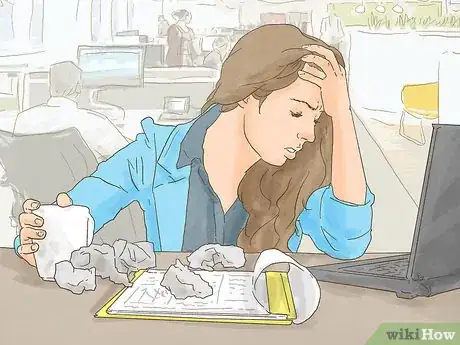








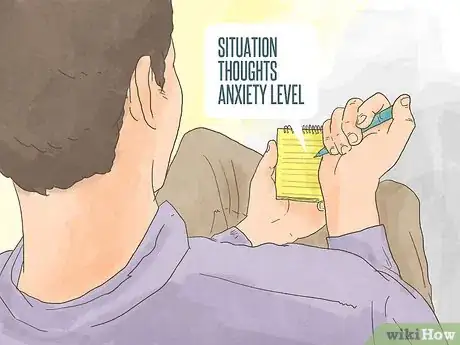
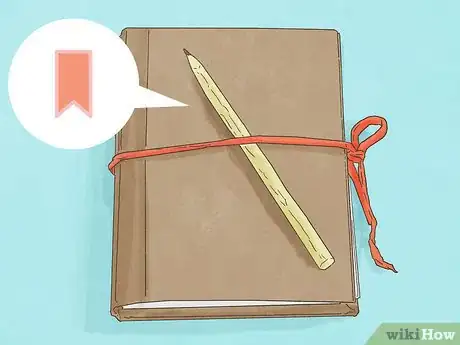




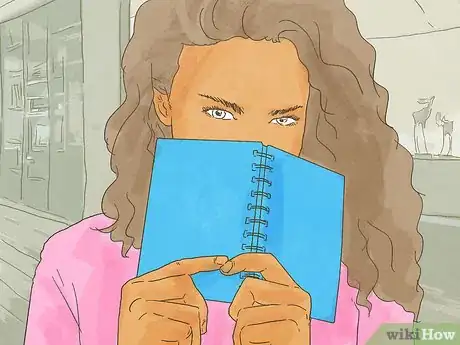
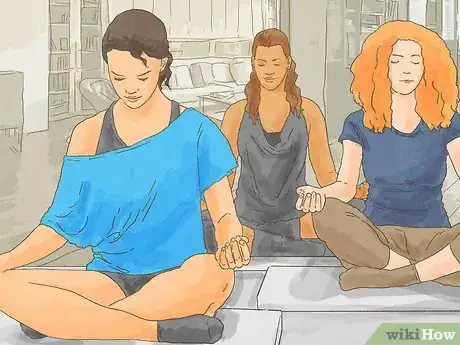






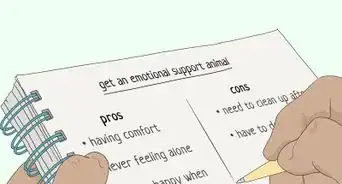
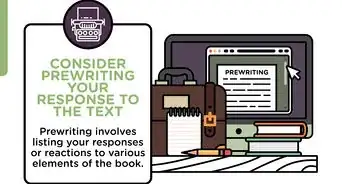














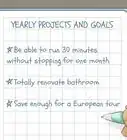





































Medical Disclaimer
The content of this article is not intended to be a substitute for professional medical advice, examination, diagnosis, or treatment. You should always contact your doctor or other qualified healthcare professional before starting, changing, or stopping any kind of health treatment.
Read More...